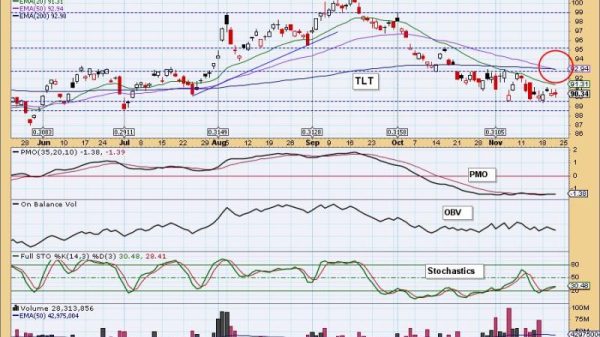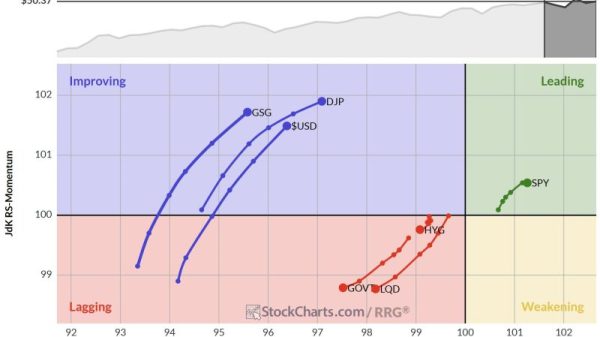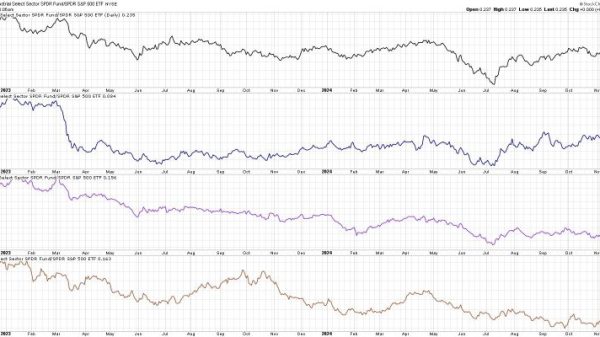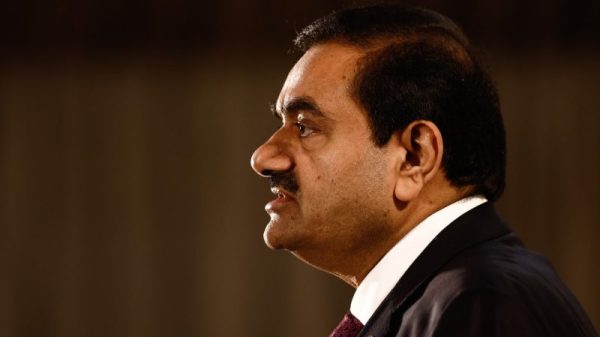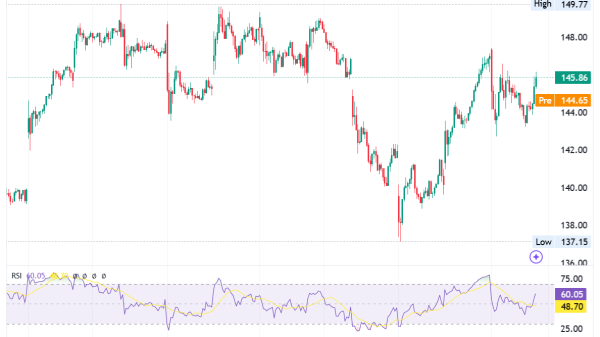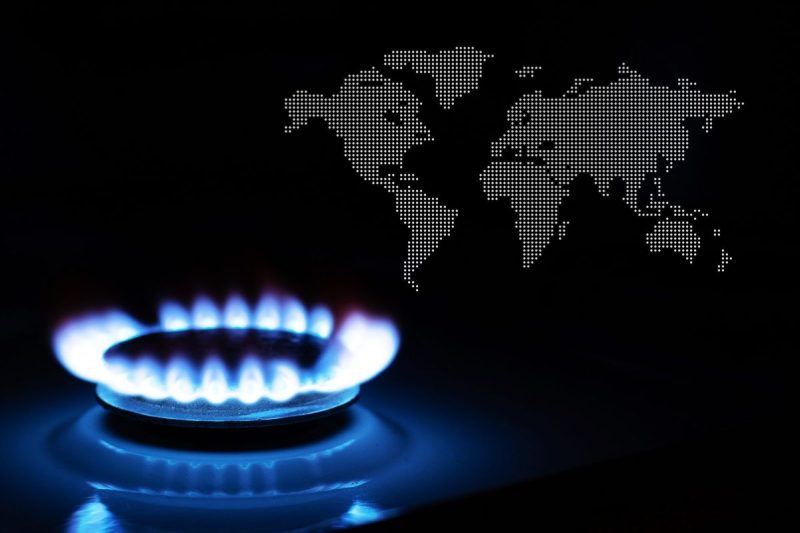Natural gas is an important energy fuel, even as the world transitions to a carbon-free economy. When investing in this industry, it’s key to know the ins and outs of natural gas production by country.
Global natural gas production increased slightly in 2023 to 4.05 trillion cubic meters, up from 4.04 trillion cubic meters in 2022, according to the Energy Institute.
The United States registered a 4.2 percent uptick in natural gas production in 2023, while Russia’s natural gas production fell by 5.2 percent during the period on lower exports to Europe.
Although the country is still the world’s second largest natural gas producer and the second largest exporter of the fuel, the EU is looking to phase out Russia-sourced natural gas by 2027 due to the country’s war with Ukraine. The EU reports that Russia only supplied 14 percent of its member countries’ natural gas requirements in 2023, down from 45 percent in 2021. For its part, Russia has pivoted its energy export trade to the east, with China and India propping up its natural gas export market.
Conversely, global natural gas demand grew by a modest 0.5 percent in 2023, as increases in China, North America, Africa and the Middle East were partially offset by declines elsewhere.
China’s continued pandemic recovery positioned the nation as the world’s largest LNG importer, with a 7.2 percent rise in natural gas demand.
In contrast, Europe saw a 6.9 percent drop in natural gas consumption, reaching its lowest level since 1994. This decline was driven by the rapid growth of renewables and increased nuclear power availability, which reduced the need for natural gas and pushed prices lower.
Read on for a look at the top 10 natural gas-producing countries in 2023 based on data from the Energy Institute.
1. United States
Production: 1.35 trillion cubic meters
The US is by far the largest producer of natural gas in the world, representing nearly a quarter of global natural gas production. Its output has increased by more than 350 billion cubic meters in the past decade owing to the increasing cost of coal, and advancements in extraction technology such as horizontal drilling and hydraulic fracturing, also known as fracking.
In addition to being a major natural gas producer, the US is also the biggest consumer of the fuel. In 2023, US demand for natural gas totaled 886.5 billion cubic meters, primarily for home heating and generating electricity. In the first half of 2022, Reuters reported that the US became the world’s largest exporter of liquefied natural gas (LNG) as the country increased shipments to Europe due to Russia’s war in Ukraine, and it continues to hold that title.
In 2023, the Appalachia region led US natural gas production, contributing 29 percent of the total output. However, production growth has been hampered by limited pipeline capacity, restricting the transport of gas to demand markets.
For the first seven months of 2024, the US exported 4.42 billion cubic meters of natural gas, a 3.3 percent increase from 2023’s 4.34 billion cubic meters, and 7.5 percent more than 2022’s 4.12 billion cubic meters.
High international demand and steady domestic consumption growth will keep the US a net exporter of petroleum products and natural gas through 2050. Despite the shift to renewable electricity generation, US natural gas production is expected to rise due to increased international demand for liquefied natural gas, according to the US Energy Information Administration’s Annual Energy Outlook 2023.
2. Russia
Production: 586.4 billion cubic meters
As the second largest exporter and the next largest producer of natural gas in the world, Russia also holds the biggest-known natural gas reserves on the planet. The country’s state-owned energy group Gazprom reportedly holds a 16.3 percent share of global natural gas reserves. Novatek is another of the country’s main gas producers.
“Historically, production was concentrated in West Siberia, but investment has shifted in the past decade to Yamal and Eastern Siberia and the Far East, as well as the offshore Arctic,” according to the International Energy Agency.
Europe’s rejection of Russian natural gas products led to a 41 percent decline in revenues for the country’s producers in the first three quarters of 2023, reported Reuters.
Despite the conflict between Russia and Ukraine, the latter has remained a crucial corridor for Russian natural gas into the EU. In September 2024, Russian natural gas exports that traveled through Ukraine totaled 1.26 billion cubic meters.
However, this is likely to change next year as Ukraine announced plans to end its Russian gas transit agreement, a move that analysts expect will intensify the energy tensions between the two countries.
When the current agreement expires at the end of 2024, the major route through which Russian natural gas flows to Europe will be cut off, potentially disrupting supply chains and raising concerns over energy security across the region.
3. Iran
Production: 251.7 billion cubic meters
Iran is the third largest natural gas-producing country, representing about 6 percent of global output. The Middle Eastern nation ranks second in terms of natural gas reserves. However, its natural gas infrastructure is far behind the top two natural gas producers.
Iran has tripled its natural gas production in the past decade, becoming the Middle East’s largest producer. Iran and Qatar share the world’s largest natural gas field. Iran’s portion is known as South Pars and Qatar’s, North Dome.
Iran plans to boost its production capacity by 30 percent within five years, supported by an US$80 billion investment in its gas fields, according to the nation’s Oil Minister Javad Owji. However, Qatar’s expansion of liquefied natural gas production in North Dome poses a challenge to Iran’s output ambitions.
Turkey and Iraq are major importers of Iranian natural gas, while Turkmenistan and Armenia have swap deals with Iran.
In early October, Iran and Russia signed a long-term natural gas supply deal, with Russia’s Gazprom committing to supply 109 billion cubic meters of gas to Iran annually. The agreement will boost Iran’s gas capacities, and the country plans to use the gas domestically and for re-export to countries like Turkey, Pakistan and Iraq.
The deal could also enhance regional energy security and counter the impact of sanctions such as the US ones on Iran’s energy sector.
4. China
Production: 234.3 billion cubic meters
In recent years, China’s government has incentivized the transition from coal to natural gas to reduce air pollution and meet emissions targets. Since 2013, natural gas production in China has grown by 92.3 percent, from 121.8 billion cubic meters in 2013 to 234.3 billion cubic meters in 2023, an all-time record.
China still relies on imports to meet about half of its demand. Australia, Turkmenistan, the US, Malaysia, Russia and Qatar are some of its biggest providers.
“In March 2022, China’s government released its 14th Five-Year Plan (2021-25), which sets the domestic natural gas production target at 22.3 (billion cubic feet per day) by 2025, or 3.0 (billion cubic feet per day) more than domestic production in 2021,” according to the US Energy Information Administration (EIA).
Unconventional gas sources such as shale, coal-bed methane and natural gas hydrates accounts for an estimated 43 percent of China’s total gas output.
Noted in a September Bloomberg report, China has significantly increased its underground natural gas storage ahead of winter, reflecting preparation for both peak demand and possibly reduced consumption due to a slowing economy.
The well-stocked reserves, combined with expanded storage facilities, could cushion against harsh winter conditions, but a mild season may reduce imports, especially costly liquefied natural gas spot purchases.
China’s increased domestic gas production, long-term LNG contracts and a sluggish economy, combined with expanding renewable energy, challenge future gas demand growth.
5. Canada
Production: 190.3 billion cubic meters
Canada holds 83 trillion cubic feet of proved natural gas reserves, and the Western Canadian Sedimentary Basin (WCSB) is the prime source of the majority of Canada’s natural gas production. In addition to the WCSB, offshore fields near Newfoundland and Nova Scotia, the Arctic region and the Pacific coast hold significant natural gas reserves.
Canada is also a top natural gas exporter, relying exclusively on pipelines, with the US as its only trading partner. In 2022, 99 percent of all US natural gas imports came from its neighbor to the north. The fact that Canada lacks LNG infrastructure makes it an unlikely potential source for meeting Europe’s natural gas needs in lieu of Russia.
According to the data from the Government of Canada, natural gas production rose in 2023, averaging 17.9 billion cubic feet per day. In December, output hit 18.8 billion cubic feet per day. Notably, production levels exceeded 18 billion cubic feet per day for eight of the 12 months.
In mid-September, LNG Canada provided an update on the LNG Canada project and the Coastal GasLink pipeline, which LNG Canada CEO Jason Klein said is now 95 percent complete.
Once finished, the pipeline will be used to export Canadian natural gas to Asian markets, “putting Canada on the global map of LNG exporting countries and creating a world-leading LNG industry in British Columbia and Canada.”
First shipments are scheduled for mid-2025.
6. Qatar
Production: 181 billion cubic meters
Qatar is the sixth largest natural gas producer and hosts the third largest proved natural gas reserves in the world. The majority of its reserves are located in the world’s largest natural gas field, the offshore North Field, which it shares with Iran.
The Middle Eastern country also ranks as the third largest natural gas exporter and is third in the world in LNG exports as of October 2023. In recent years, Qatar has made moves to capitalize further on its resources in an effort to expand its footprint in the international natural gas market. Statista reports that state-owned Qatar Petroleum is looking “to increase its LNG export market to compete with Russian LNG deliveries.”
In early 2024 Qatar unveiled plans to increase production from the world’s largest natural gas field, aiming to raise capacity to 142 million metric tons per annum by 2030.
The North Field expansion, referred to as North Field West, is anticipated to contribute an additional 16 million metric tons of liquefied natural gas annually to the existing expansion efforts.
7. Australia
Production: 151.7 billion cubic meters
Since 2009, Australia has added 113 billion cubic meters of natural gas production. Nearly all of Australia’s natural gas resources are located in the massive gas fields on the North West Shelf, “providing feedstock to seven LNG projects.”
Australia’s LNG exports have grown exponentially over the past decade as several new production facilities have come online. Today, Australia has the second largest operating LNG export capacity in the world.
In late 2023, major Australian energy company Santos said it expects a decline in its natural gas production for 2024 as its Bayu-Undan offshore gas field in the Timor Sea is nearing depletion.
The federal government released its Australia’s Future Gas Strategy in May 2024. The initiative focuses on ensuring energy security and supporting the transition to net-zero by 2050 by boosting natural gas production. The government plan highlights the need for new gas supplies to prevent shortages by 2028 on the east coast and 2030 on the west coast.
While supportive of the plan, Australia’s energy producers have raised concerns of potential gas supply shortfalls by the end of the decade amid global market volatility.
Meg O’Neill, chair of Australian Energy Producers, highlighted that without action, Australia’s east and west coasts could face shortages by 2028 and 2030, respectively, which could drive up energy prices.
8. Norway
Production: 116.6 billion cubic meters
Norway is the world’s eighth largest natural gas producer and third largest natural gas exporter. The Scandinavian country has understandably replaced Russia as the major supplier to the European natural gas market. In 2023, Norway reportedly accounted for 30.3 percent of natural gas supplied to the EU.
Norway’s natural gas companies have ramped up production in response to increased demand, and in mid-2023 the government gave the green light to 19 oil and gas extraction projects in the country.
In early 2024, some concern arose that the industry may face headwinds from a proposal by a climate change committee to temporarily suspend new licenses while the government decides on a climate strategy. However, in May the government offered licenses for 37 new blocks and emphasized the industry’s importance to Norway and Europe.
Near-term gas production is forecasted to contract slightly in 2025 according to the Norwegian Budget Bill released in early October. The country’s natural gas output is expected to decline by 1.6 percent, from 123 billion cubic meters in 2024 to 121 billion cubic meters in 2025.
9. Saudi Arabia
Production: 114.1 billion cubic meters
The ninth largest natural gas-producing country, Saudi Arabia has seen its output steadily increase since 2013, reaching a record 116.7 billion cubic meters in 2022.
Mordor Intelligence reports that this production growth was due in large part to increased development of standalone natural gas wells. State-run Saudi Aramco has awarded contracts to energy companies looking to develop the country’s largest unconventional gas field, Jafurah, located near the Persian Gulf.
Currently the country does not export its natural gas production; however, the government plans to begin natural gas exports by 2030. According to the EIA, Saudi Arabia is working to replace “crude oil, fuel oil, and diesel-powered electric generators with natural gas and renewable energy generation by 2030, which will likely increase domestic natural gas demand.”
In late 2023, Saudi Arabia began investing in the LNG market with Saudi Aramco buying a stake in MidOcean Energy, which is set to acquire interests in four Australian LNG projects. In July 2024, Aramco awarded contracts worth US$12.6 billion to expand production in the Jafurah field.
10. Algeria
Production: 101.5 billion cubic meters
Rounding out the top 10 natural gas-producing countries is Algeria, which produced 101.5 billion cubic meters of natural gas in 2023. The country’s output increased year-over-year from 97.6 billion cubic meters in 2022.
Algeria has the fifth largest LNG export capacity in the world. In 2022, nearly 85 percent of the country’s exports went to feed Europe’s natural gas demand. Italy signed an agreement with Algeria last year to increase the amount of natural gas it imports from the North African country.
From 2023 to 2028, the Algerian government expects to see its natural gas production increase by 1.4 percent annually.
In late May, Algeria signed two key hydrocarbon deals with US firms ExxonMobil (NYSE:XON) and Baker Hughes (NASDAQ:BKR) to boost its natural gas production and enhance exports to Europe. This comes as European nations seek alternatives to Russian gas amid rising demand.
FAQs for gas investing
What is natural gas made of and how is it formed?
Natural gas is a mixture of methane and other naturally occurring gases. As fossil fuels, both crude oil and natural gas are formed via the same geological process. It isn’t surprising then that the two materials are often found together. Natural gas is the product of ancient decomposed organic matter that mixed with sediment, became buried and was subject to immense pressure and heat over millions of years.
How is natural gas produced?
Natural gas is extracted via wells drilled into subsurface rock formations, or via hydraulic fracturing or ‘fracking’ technology from shale formations. Following extraction, natural gas is separated from other liquids, including oil, hydrocarbon condensate and water. This separated gas then needs to be further processed to meet specific requirements for end-use quality and safe pipeline transmission.
What is natural gas used for?
Natural gas is well known as a fuel for heating, generating electricity and powering vehicles. However, it’s also used to manufacture various products, such as vinyl flooring, carpeting, Aspirin and artificial limbs; in addition, it’s a key component in the production of ammonia.
Is natural gas a clean energy?
According to the EIA, burning natural gas for power emits fewer greenhouse gas emissions and pollutants than other fossil fuels, since it burns more easily and contains fewer impurities. The EIA also notes that natural gas produces less carbon dioxide per equivalent amount of heat production.
Is natural gas cleaner than coal?
Although natural gas is a fossil fuel and was formed under the same conditions, it is often pegged as a ‘cleaner’ energy option than coal or oil. The EIA states that, ‘burning natural gas for energy results in fewer emissions of nearly all types of air pollutants and carbon dioxide than burning coal or petroleum products to produce an equal amount of energy.’
How much natural gas is left in the world?
Natural gas is not an infinite, renewable resource; however, its hard to determine how many untapped sources are left in the world. According to one estimate, natural gas reserves are sufficient to last another 53 years at current consumption rates. That figure doesn’t take into account known natural gas resources under development or those yet to be discovered in underexplored regions.
How did the Ukraine war affect gas?
Russia was a leading supplier of natural gas to Europe prior to the country’s invasion of Ukraine, representing about 40 percent of the region’s supply. As a result of the war, energy prices shot up both in Europe and globally. According to S&P Global, the war has “accelerated” the globalization of the natural gas market as Europe turns to LNG. In the midst of this changing landscape, the US has become the world’s largest exporter of LNG as it stepped up shipments to Europe.
Can Europe survive without Russian gas?
The EU is working to phase out Russian natural gas exports by 2027. The growing global LNG market allows flexibility for European countries looking to source natural gas supply from producers as close to home as Norway (Europe’s biggest gas supplier), other major natural gas suppliers in North Africa or from the world’s largest natural gas producer, the US.
Securities Disclosure: I, Georgia Williams, hold no direct investment interest in any company mentioned in this article.







